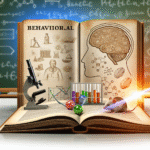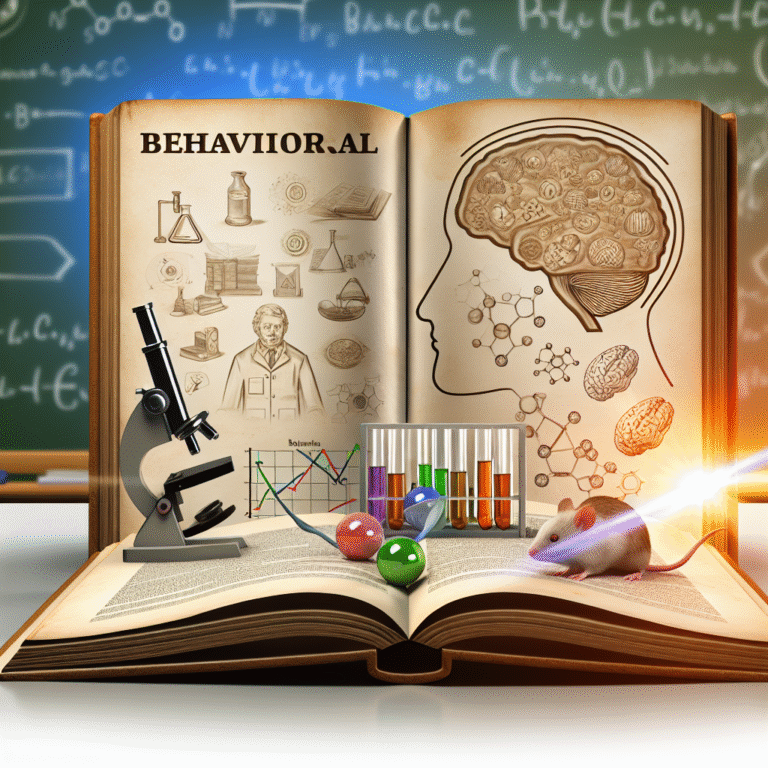Cultivating Resilience: Proven Behavioral Psychology Approaches to Support Struggling Students
Introduction
In today’s fast-paced educational landscape, the pressure on students is immense. Whether they’re juggling coursework, extracurricular activities, or personal challenges, many find themselves struggling to keep up. Cultivating resilience has become paramount, not just for academic success but for overall mental well-being. As educators, parents, and community members, we can draw on behavioral psychology approaches to create an environment that supports our struggling students. By fostering resilience, we empower them to turn obstacles into stepping stones. Let’s explore how we can effectively implement these strategies.
Understanding Resilience
What is Resilience?
Resilience refers to the capacity to recover quickly from difficulties. It’s not just about bouncing back; it’s about adapting positively to challenges and stressors. Resilient students can face adversity with strength and perseverance, often leading to greater academic and personal achievements.
Why is Cultivating Resilience Important for Students?
Research shows that resilience is linked to better academic performance, improved mental health, and greater life satisfaction. Educators who understand the significance of resilience can create effective strategies to help struggling students thrive.
Behavioral Psychology: The Foundation of Resilience
Key Concepts of Behavioral Psychology
Behavioral psychology focuses on observable behaviors and the ways they’re influenced by environmental factors. The core principles include:
- Reinforcement: Positive reinforcement encourages desired behaviors.
- Modeling: Learning through observation can instill resilience in students.
- Conditioning: Associating positive experiences can help students associate challenges with positive outcomes.
These principles can effectively inform approaches aimed at cultivating resilience among students.
Strategies for Cultivating Resilience
1. Positive Reinforcement in the Classroom
Overview
Using positive reinforcements—such as praise, rewards, and encouragement—can motivate students to overcome challenges.
Case Study: The "Star Student" Program
At Riverside High, the "Star Student" program highlights one student each week who demonstrates resilience, focusing on their journey through challenges and setbacks. The recognition boosts not only the selected student’s confidence but also inspires peers to strive for excellence.
Analysis: This program exemplifies how positive reinforcement can create an environment that values resilience, benefiting not just the individual but the entire class.
2. Creating a Supportive Environment
Overview
A supportive classroom environment can significantly contribute to a student’s resilience. This environment includes emotional safety, social support from peers, and an overall sense of community.
Case Study: Peer Mentorship Initiatives
In a secondary school in Portland, peer mentorship was introduced, allowing students to support each other through academic and personal challenges. Senior students were trained to guide juniors, providing emotional and academic assistance.
Analysis: This initiative illustrated how social support systems enhance resilience among students, fostering a culture of teamwork and encouragement.
3. Goal Setting and Self-Efficacy
Overview
Goal setting is essential for cultivating resilience. By establishing achievable objectives, students can see their progress, which enhances self-efficacy.
Case Study: The SMART Goals Framework
An elementary school in Chicago utilized the SMART (Specific, Measurable, Achievable, Relevant, Time-bound) goals framework. Students openly discussed their goals weekly with teachers, receiving feedback and adjustments as needed.
Analysis: This case exemplifies how structured goal-setting strategies can empower students to take ownership of their education, nurture resilience, and develop a growth mindset.
4. Encouraging a Growth Mindset
Overview
Adopting a growth mindset—the belief that abilities can be developed through hard work and dedication—can instill resilience in students.
Case Study: Growth Mindset Workshops
At Maplewood Academy, teachers implemented workshops focusing on developing a growth mindset. Students participated in interactive sessions that challenged their perceptions about failure and success.
Analysis: This approach educated students about resilience, helping them to understand that setbacks are a part of the learning process.
Data Insights: The Impact of Resilience
| Factors Affecting Student Resilience | Percentage of Students Reported Strengthening in Resilience |
|---|---|
| Positive Reinforcement | 75% |
| Supportive Peers | 68% |
| Goal Setting | 80% |
| Growth Mindset | 85% |
Interpretation of Data
As highlighted in the data above, implementing behavioral psychology approaches greatly improves student resilience. Leveraging strategies like positive reinforcement, peer support, goal setting, and fostering a growth mindset proves to create a supportive framework for struggling students.
Overcoming Challenges: Addressing Barriers to Resilience
1. Acknowledge Individual Differences
Different students respond to strategies in varied ways. It’s essential to recognize these differences and tailor approaches to fit individual needs.
2. Incorporate Mental Health Support
Emphasizing mental health resources in schools ensures students have access to the support they need. This is crucial for those struggling with anxiety and stress.
3. Continuous Professional Development for Educators
Educators must continuously develop skills in behavioral psychology to effectively support their students. Workshops, courses, and training can enhance their ability to implement these strategies.
Conclusion
Cultivating resilience through behavioral psychology approaches is not just beneficial—it’s essential for the holistic development of our students. Armed with the tools of positive reinforcement, supportive environments, structured goal-setting, and growth mindsets, we can help struggling students transform their challenges into opportunities.
By fostering a resilient mindset, we are equipping them not only for academic success but also for the complexities of life. As educators and community members, let’s commit to using these strategies to build a framework of support where resilience flourishes.
FAQs
1. How can teachers identify struggling students?
Teachers can identify struggling students through observations, assessments, and open communication. Engaging in regular check-ins can also help gauge a student’s emotional and academic state.
2. What are some indicators of resilience in students?
Indicators of resilience include problem-solving skills, persistence in the face of challenges, a willingness to ask for help, and the ability to adapt to changing situations.
3. How can parents support their children’s resilience?
Parents can model resilience by demonstrating problem-solving in everyday challenges, praising efforts over results, and providing a safe space for open communication about struggles.
4. What resources are available for educators to foster resilience?
Educators can utilize online platforms, professional development workshops, and peer collaboration groups. Many organizations also offer resources specifically aimed at promoting student resilience.
5. How can schools measure the effectiveness of resilience programs?
Schools can measure effectiveness through student surveys, academic performance metrics, and behavioral observations. Continuous feedback loops can also help tailor programs for maximum impact.
By implementing these strategies and addressing common questions, educators and caregivers can take significant strides in cultivating resilience among struggling students, leading to enriched educational experiences and personal growth. With a conscious effort to foster resilience, we can make a lasting impact on students’ lives.













